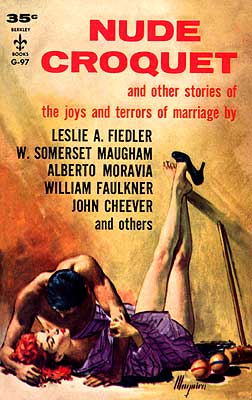
Following up on our discovery of the English Preparatory School in Glion, Switzerland—a place where our George Mills must have taught after leaving his situation at The Craig in Windermere, Cumbria, for whatever reason—we pretty much know at the very least some small amount about the places where Mills was a schoolmaster prior to his writing his first novel, Meredith and Co., which was published in 1933.
The only workplace of Mills's that we are now unsure of is the school mentioned in the dedication to the first edition of his second novel, King Willow, published in 1938 [above, left]. Here's that original dedication [pictured below, right], which Mills himself dated 'June, 1938': "TO THE HEADMASTERS, STAFF, AND BOYS OF EATON GATE PREPARATORY SCHOOL, LONDON, S.W. 1."
There's just something quite strange about that.
A myriad of searches through the internet, library databases, and periodical literature haven't turned up so much a crumb of evidence that such a school ever existed.
Awaiting research assistance from the school itself, I have checked the archives of the London Times for more about T. S. Morton—a man [pictured, right] who could have employed George Mills during the mid 1930s if, indeed, Eaton House School was Eaton Gate Prep. (And, by the way, it is "T.S." Morton, not "J" Morton as Eaton House Schools' website erroneously claims.)
Here's Morton's obituary from the Tuesday, 23 January 1962 edition of the Times:
Mr. T. S. Morton, a well-known figure in the preparatory school world of a generation ago, and founder and first headmaster of the school which became Eaton House School, Eaton Gate, died in a St. Albans nursing home on Sunday in his ninety-fifth year.
 Thomas Sale Morton, born in 1867, the elder son of a Hampstead physician, Dr. John Morton, was a descendant of the Scottish antiquarian John Leyden and of W. J. Thomas, founder of Notes and Queries, and thus inherited a tradition of scholarly pursuits. From Charterhouse he went as a classical scholar to Clare College, Cambridge, and in 1888 joined Dr. Williams's staff at Summer Fields, Oxford. It was in the days when the great public schools demanded a thorough grounding in the classics from their young entrants, and the Summer Fields' products regularly carried off a range of scholarships and places at Eton, Winchester, and Westminster. Morton was a skilful Latinist and some of his translations have been used in schools for years as text-books, and he had the gift of interesting small boys in the Greek and Roman worlds.
Thomas Sale Morton, born in 1867, the elder son of a Hampstead physician, Dr. John Morton, was a descendant of the Scottish antiquarian John Leyden and of W. J. Thomas, founder of Notes and Queries, and thus inherited a tradition of scholarly pursuits. From Charterhouse he went as a classical scholar to Clare College, Cambridge, and in 1888 joined Dr. Williams's staff at Summer Fields, Oxford. It was in the days when the great public schools demanded a thorough grounding in the classics from their young entrants, and the Summer Fields' products regularly carried off a range of scholarships and places at Eton, Winchester, and Westminster. Morton was a skilful Latinist and some of his translations have been used in schools for years as text-books, and he had the gift of interesting small boys in the Greek and Roman worlds.With the encouragement of Mrs. Maurice Macmillan, mother of the Prime Minister, he planned in 1897 a day preparatory school in Cliveden Place, and soon began to draw large numbers of boys from Belgravia. He used to say that of all the boys he taught he thought "young Harold Macmillan" was the brightest. But he had considerable respect for the classical discipline which emerged in other pupils such as Ronald Knox, Lord Wavell, and in later years Anthony Asquith. He remembered doing private coaching at 10 Downing Street during the First World War with Mrs. Asquith on hands and knees coaxing a reluctant fire to save master and pupil from freezing. He would usually be invited to stay to luncheon and on one occasion was asked to stay in order to keep the conversation going with Lord Kitchener. His devotion to teaching and dislike of administration made him dispose of his highly successful school, and in the later part of his career he was a member of the staff at The Hall, Hampstead. His tall, spare figure was always noticeable at meetings of the Classical Association, and while he bemoaned the decline of the classics in English education he did not resist the conclusion that there were other interests demanding the studied attention of young English gentlemen. He was unmarried.
As we know from the brief history of the institution at the school's own website: "By January 1937, some 50 boys were enrolled, forcing the school to move to 3 Eaton Gate."
That would have been about the time the faculty of the school boasted a published author, George Mills, if it's indeed the same place.
 Now, it doesn't say that the school moved to Eaton Gate [left, circe 1965] from Cliveden Place in January of 1937, just that the old school had swollen with about 50 boys by then. How long it would have taken to find a larger place nearby, notify parents, wait for it to open up, close the deal, and actually make the move is open to speculation—especially in light of the fact that there were no fax machines or photocopiers and the there was a global depression going on. Mills, however, wrote King Willow's preface in June of 1938 and actually called the school by an incorrect name.
Now, it doesn't say that the school moved to Eaton Gate [left, circe 1965] from Cliveden Place in January of 1937, just that the old school had swollen with about 50 boys by then. How long it would have taken to find a larger place nearby, notify parents, wait for it to open up, close the deal, and actually make the move is open to speculation—especially in light of the fact that there were no fax machines or photocopiers and the there was a global depression going on. Mills, however, wrote King Willow's preface in June of 1938 and actually called the school by an incorrect name.Is it possible that they were still in the process of moving to the new location and hadn't finalized the name of the school yet?
Harold Macmillan attended the school on Sloane Square known as "Mr. Gladstone's Day School" at the turn of the 20th century. By 1937, "Mr. Gladstone," who was called by Macmillan "an admirable teacher, both of Latin and Greek," may have been long gone from the institution, but if an aging Morton was still in charge at that time, he had an Oxford connection that Mills would likely have used to ingratiate himself.
There are no records about when Morton left Eaton House to take a faculty position at The Hall School in Hampstead, but that school was purchased by a Robin T. Gladstone ["Mr. Gladstone" again?] in 1919 and expanded from 60 students to 270 during the 1920s. That kind of increase in student population would have required a huge influx of faculty, and perhaps Morton was the sort of "star" educator [he'd taught young Macmillan, Knox, Asquith, and a young Laurence Olivier] who could draw wealthy parents [and their wallets] to that expanding school.
If that were so, Morton wouldn't have been around when Mills taught at Eaton House around 1937.
 One thing that we do know for sure: Mills wrote the dedication to 1933's Meredith and Co. with explicit "affection" for the boys and staffs of the schools at which he'd taught before 1933. By 1937, his dedication in King Willow to "Eaton Gate Preparatory School" is noteworthy for its complete absence of affection. It's precise—"London, S.W.1"—without any personal touch of warmth or fondness. The overall location of the school was the area in which Mills had been raised [right] , and in which he had always had a great deal of family, and one could assume many of the children at the school [which was never a boarding school until it moved to Haynes Hill, Twyford, Berks in 1939, and then only for the duration of the war] were local kids whose familes he might have known well. In this case, a lack of fondness doesn't seem to fit.
One thing that we do know for sure: Mills wrote the dedication to 1933's Meredith and Co. with explicit "affection" for the boys and staffs of the schools at which he'd taught before 1933. By 1937, his dedication in King Willow to "Eaton Gate Preparatory School" is noteworthy for its complete absence of affection. It's precise—"London, S.W.1"—without any personal touch of warmth or fondness. The overall location of the school was the area in which Mills had been raised [right] , and in which he had always had a great deal of family, and one could assume many of the children at the school [which was never a boarding school until it moved to Haynes Hill, Twyford, Berks in 1939, and then only for the duration of the war] were local kids whose familes he might have known well. In this case, a lack of fondness doesn't seem to fit.Is it possible that Mills left Eaton House School on less than good terms? Is the misnaming of the school something he did intentionally? It seems peculiar, especially in light of the dedication's brevity, that he had simply miswritten the name accidentally and never noticed his error. Such carelessness could be reflective of something else troubling Mills as he sat to write that dedication. Could it have been true that, in his case, one could not 'go home again'?
Of course, perhaps a typesetter at G. G. Harrap & Co., the publishing house, had bollixed up the dedication, skipping from "Eaton House" in the school's name, onward to "Eaton Gate" in the school's address without ever noticing.
But it is really interesting to note that when Meredith and Co. was re-released in the 1950s, the warm dedication to Windlesham House School, Warren Hill School, The Craig, and Captain Wm E. Mocatta's English Preparatory School in Glion remained intact.
 The subsequent edition of King Willow, published by Spring Books in the 1950s, contained a completely different dedication—one in which no Eaton House or Eaton Gate School was ever mentioned at all. Since Eaton House was still operating in the late 1950s when King Willow was reprinted, it may have been no accident that a bitter Mills decided not to publicize the institution anymore, changing to a far more timely and heartfelt dedication to a "Beryl and Ian" [left].
The subsequent edition of King Willow, published by Spring Books in the 1950s, contained a completely different dedication—one in which no Eaton House or Eaton Gate School was ever mentioned at all. Since Eaton House was still operating in the late 1950s when King Willow was reprinted, it may have been no accident that a bitter Mills decided not to publicize the institution anymore, changing to a far more timely and heartfelt dedication to a "Beryl and Ian" [left].It seems obvious that, with no other school in Eaton Gate at the time, Mills must have been a schoolmaster at Eaton House. What we aren't as sure of is whether or not he left bad blood between himself and the institution.
As usual, if you can shed some light on any of this—George Mills, Eaton House School, Mr. Gladstone's Day School, T.S. Morton, or Eaton Gate Preparatory School—please don't hesitate to let me know!
























![Meredith and Co. [1933] by George Mills](https://blogger.googleusercontent.com/img/b/R29vZ2xl/AVvXsEjlUeRNPnH8Xd8JT59QdtabQHRI6DI6Hqew57i6qixjOL3LjgUD9g22o3-wNlmBya36D5-6KZXX-sxLnktAfEqjlvTmdwyiIL2K6VHOGW2Wq9Pe8_oFGknENfVE1Xrkdj0b8FYXTz_6SMg/s1600-r/sm_meredith_1933.JPG)
![King Willow [1938] by George Mills](https://blogger.googleusercontent.com/img/b/R29vZ2xl/AVvXsEgiz_iaQjinIbVw6yQ-W4hwx6wGJwMQH9azCs3Qacp9eX627B7Eq9hMn1wlHLzlkbcflHRWM8VcPX-1uteKbs4LA5q5Oq69WhrnhzBQLjpseK_M34PSoOOhTZ96EfVAGFehG53gZ0M4EvU/s1600-r/sm_1938.JPG)
![Minor and Major [1939] by George Mills](https://blogger.googleusercontent.com/img/b/R29vZ2xl/AVvXsEgH5nj4Q6BNpzVEb1vyJeGV6ikuN4SFAyDa-jypIgbvdrxqcjHkNxqjrXH7ptZmge7oTTpn5QjAI0yCJPdI-fIzooCDD1TAA3RDxO9jzLcU3QOIhBWKiKNz6CPjCSTZgIPd9_4zM7LLpAw/s1600-r/sm_1939.JPG)
![Meredith and Co. [1950] by George Mills](https://blogger.googleusercontent.com/img/b/R29vZ2xl/AVvXsEgm_JPAXPpX0wb8bDkjYG67Sg1HePiPhRP6b9oUMWvkJhiW6XJzmxTQ7TBepfxpPgRrFNCRuumYRj-SAfU9Kw-uDsbO5HBtyxfQfClHVMJxJUkDpbkrCPhzpC4H_g_ctlirgnSla4vX1EQ/s1600-r/sm_1950.JPG)
![Meredith and Co. [1957?] by George Mills](https://blogger.googleusercontent.com/img/b/R29vZ2xl/AVvXsEg0zRm3-CCmA8r2RrBmrACDvmxJjoBjfxUoPI9yc6NWu1BZ3dd89ZvCixmmKZe1ma0QiDIrsDZNqf-8h1egh0JLiRYHagXAqQ1UknWPy6SksK76psYPcEMLGa_Aj7wo2vMFPo0aMdcx_pg/s1600-r/sm_meredith.JPG)












